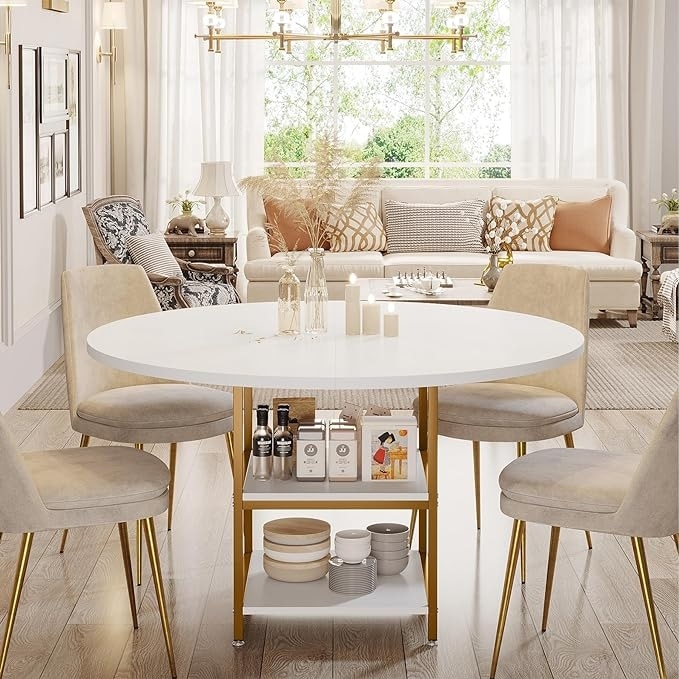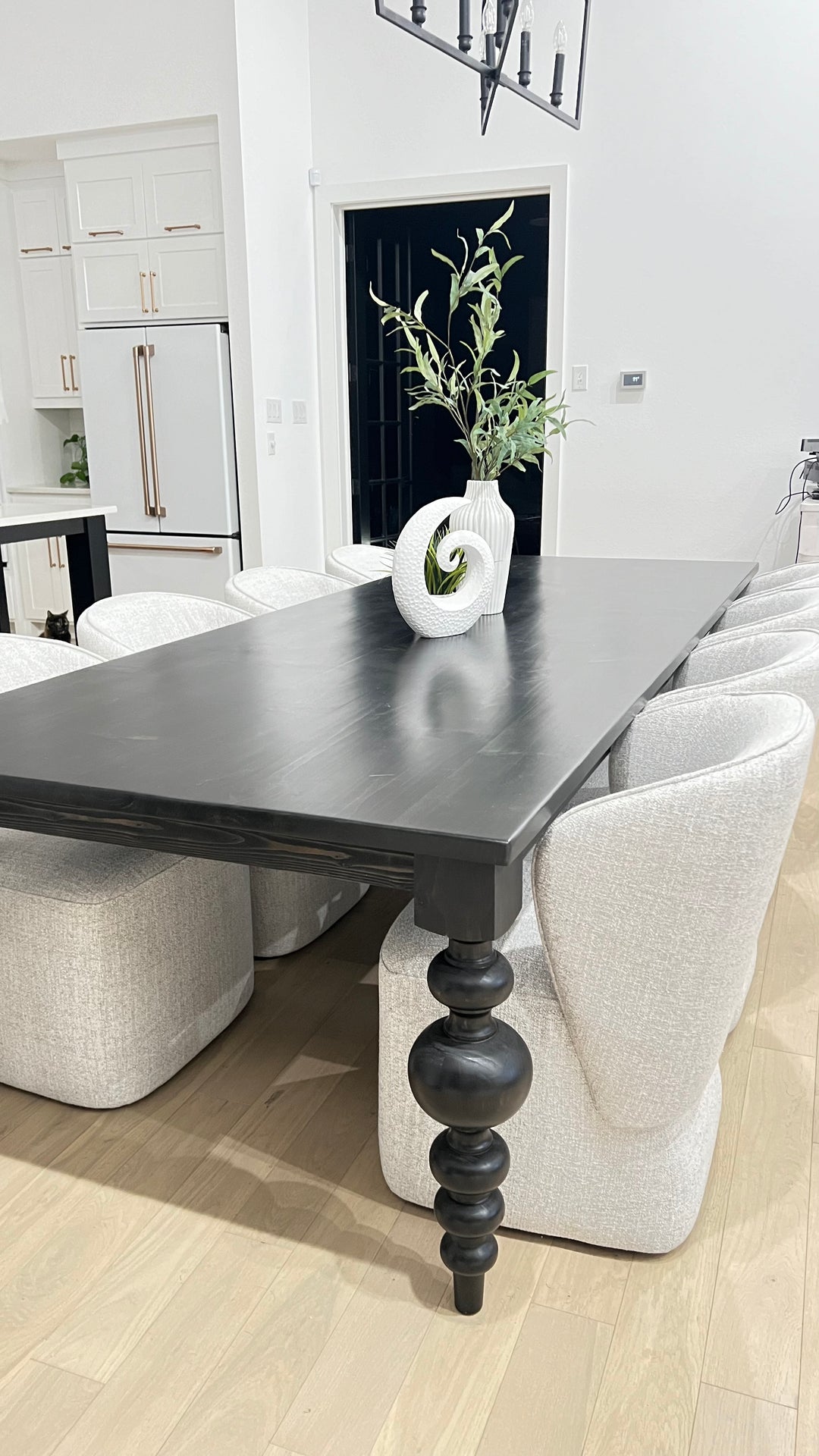Find the Ideal Dining Room Table Legs for Any Interior Design Style
Find the Ideal Dining Room Table Legs for Any Interior Design Style
Blog Article
From Typical to Modern: Find the Suitable Dining-room Table Legs for Your Style
While traditional designs such as cabriole and turned legs evoke a feeling of ageless elegance, contemporary designs like hairpin and geometric alternatives present a chance for striking aesthetic passion. As you consider these aspects, the inquiry stays: just how can you perfectly integrate these diverse leg styles to develop an unified dining experience?
Understanding Table Leg Styles
The range of dining-room table leg designs can dramatically influence both the visual appeals and capability of the room. Each leg design contributes unique aesthetic aspects and functional functions, dealing with diverse layout preferences and use demands. Comprehending these designs is essential for picking the appropriate eating table that aligns with your total interior style vision.
For example, tapered legs offer a tidy, timeless appearance that can improve a space's style, while stand bases give stability and maximize legroom, making them optimal for smaller areas. Barrette legs, a hallmark of mid-century modern-day layout, present an industrial panache, allowing for a ventilated, open feeling. Similarly, trestle legs evoke rustic beauty, providing durable support and a feeling of eternity.
Wood legs can bring warmth and structure, whereas steel alternatives commonly convey a smooth, modern ambiance. Ultimately, recognizing table leg designs is vital for developing a cohesive dining location that mirrors personal style while making sure practicality and comfort.
Standard Table Leg Options
When picking dining-room table legs, typical options commonly personify ageless sophistication and workmanship. These designs reflect a rich heritage and a dedication to top quality, making them ideal for those who value timeless aesthetic appeals.
Among one of the most iconic conventional leg designs is the cabriole leg, characterized by its elegant curved form. This layout typically features decorative makings and is most generally found in Queen Anne and Chippendale furniture. Another popular option is the turned leg, which boasts a series of smooth, rounded forms that provide a classic look while maintaining stability.
Furthermore, the straight leg, while simple, offers a unadorned and sturdy framework that can mix flawlessly with a selection of tabletop designs. For those drawn to ornate outlining, claw-and-ball feet legs evoke a sense of grandeur and can offer as a stunning focal point in any kind of eating area.
Last but not least, pedestal bases, although not strictly legs, give a different standard choice that allows for ample legroom and can be beautifully sculpted. Each of these standard leg styles adds to the total atmosphere of a dining-room, weding function with visual charm.

Modern Table Leg Layouts
Modern table leg styles offer a varied variety of designs that highlight clean lines and cutting-edge materials. These styles typically prioritize capability while functioning as striking prime focus within a dining space. Minimal aesthetics are prevalent, with legs crafted from materials such as metal, glass, and crafted timber, which add to a modern and airy feel.
One popular layout is the barrette leg, characterized by its slender, tapered framework that supplies security without frustrating the tabletop (dining room table legs). This style is commonly located in mid-century modern-day furnishings and can easily enhance different dining table forms. One more fad is using geometric forms, where legs might handle angular or unbalanced kinds, adding aesthetic rate of interest and a touch of virtuosity

Blending Designs for Distinct Spaces
Typically, house owners seek to produce distinct eating rooms that show their individual style by blending different design aspects. This method permits the incorporation of varied aesthetics, leading to a harmonious yet distinctive environment. Combining a rustic check that wooden table with smooth, modern metal legs can create a distinctive contrast that raises the room's total charm.
In addition, integrating vintage table legs with contemporary tabletops can stimulate a sense of background while maintaining a modern sensibility. Such combinations not only display specific taste but additionally urge creative thinking, permitting property owners to curate a room that feels both personal and inviting.
Shade plays a vital role in this blending process; selecting table legs that match or comparison with the existing color pattern can improve aesthetic interest. Whitewashed legs can soften the daring of a dark table surface area, creating a well balanced aesthetic.
Tips for Picking the Right Legs
Selecting the right table legs is necessary for achieving both performance and visual charm in your dining room. Begin by considering the overall style of your space. Conventional setups profit from legs that feature intricate makings or transformed layouts, while modern areas might ask for smooth, minimalist designs.
Next, evaluate the height and security of the legs. dining room table legs. Conventional table range in between 28 to 30 inches in elevation, so make certain the legs complement this measurement for convenience. Furthermore, durable products, such as hardwood or steel, can enhance security and longevity
Assess the leg shape too-- options consist of straight, tapered, or pedestal designs. Straight legs provide a classic look, while tapered legs can add a touch of elegance. Pedestal bases provide sufficient legroom and are excellent for smaller spaces.
Verdict
In summary, selecting the perfect dining-room table legs requires careful consideration of both modern-day and traditional designs. Conventional choices such as cabriole and turned legs use ageless beauty, while contemporary styles like barrette and geometric shapes supply a contemporary touch. By integrating leg design, elevation, and product with wikipedia reference the overall décor, a natural and inviting environment can be achieved. Inevitably, the selected table legs need to reflect the preferred aesthetic, enhancing the eating experience within the room.
The range of eating space table leg styles can considerably influence both the aesthetics and capability of the area. Eventually, understanding table leg styles is vital for developing a natural eating area that reflects individual design while ensuring practicality and convenience.One of the most iconic conventional leg styles is the cabriole leg, characterized by its elegant bent shape. Straight legs supply a timeless appearance, while conical legs can add a touch of beauty.In recap, selecting the ideal eating room table legs requires mindful consideration of both modern-day and standard designs.
Report this page